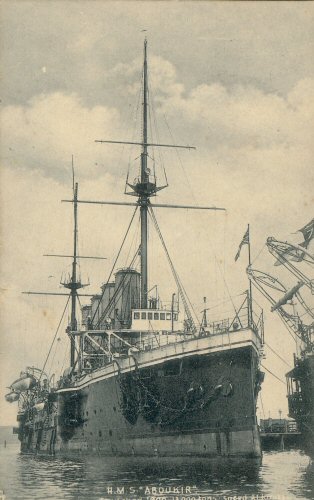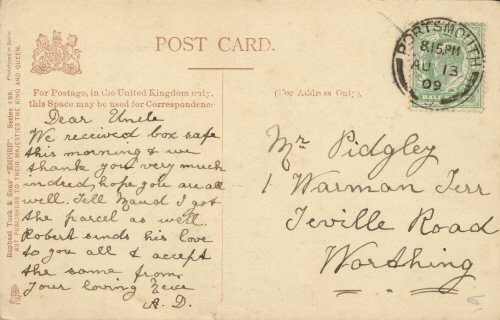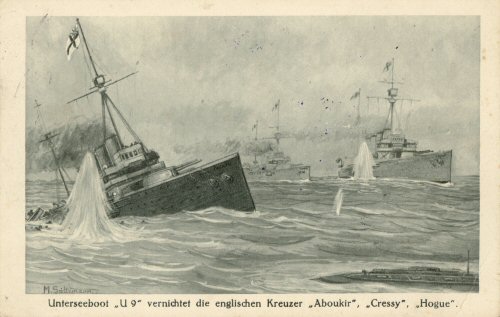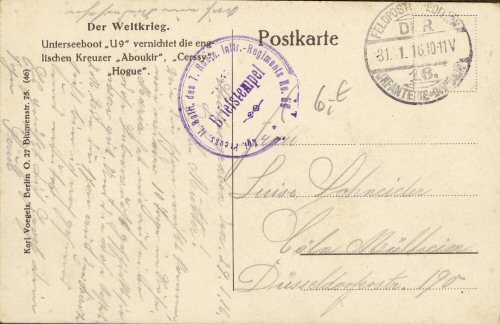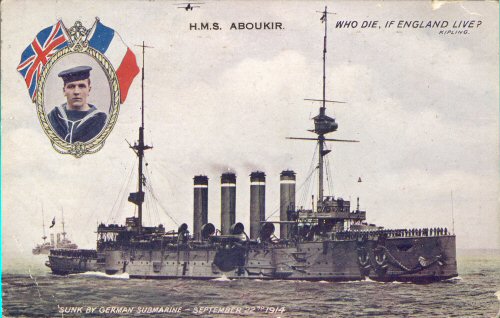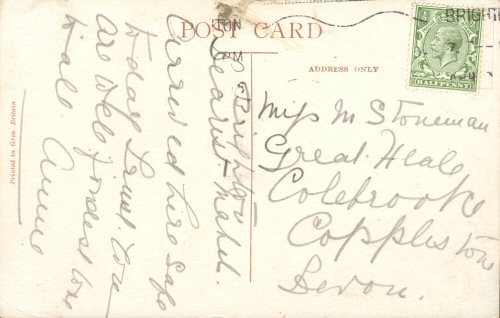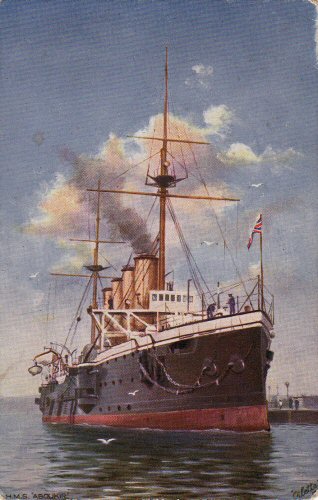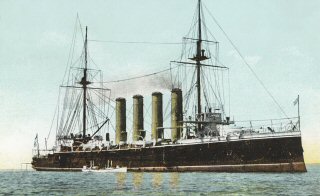
Torpedoed and sunk 22 September 1914
HMS Aboukir
Named for the Egyptian bay in which Rear Admiral Horatio Nelson defeated the fleet of Vice Admiral François Paul Brueys at the Battle of the Nile in 1798, HMS Aboukir first saw service on the Mediterranean station before returning to home waters in 1905. At the start of World War I, Aboukir was one of four units of Rear Admiral Henry H. Campbell's Seventh Cruiser Squadron based at the Nore. Their role was to support destroyer squadrons of the Southern Force in keeping German minelayers and torpedo boats out of the North Sea approaches to the English Channel. It was an assignment for which the armored cruisers were horribly ill equipped—they were known as the "live bait squadron"—and their deployment to safer waters had been discussed by Admiral of the Fleet Admiral Sir John Jellicoe, First Lord of the Admiralty Winston Churchill, and others at a meeting on September 17, 1914. Five days later, at about 0630, Aboukir and her sister ships HMS Cressy and HMS Hogue were patrolling the Broad Fourteens, an area of the North Sea between Yarmouth and Ymuiden; due to the poor weather, they were without any destroyer escorts. Oblivious to the threat of submarine attack, the three ships were steaming on a steady course at 10 knots when they were attacked by the German U.9 about 20 miles northwest of the Hook of Holland (30 miles west of Ymuiden). A single torpedo broke Aboukir in two and she sank in twenty-five minutes with the loss of 527 men in about 52°18N, 3°41E. Captain Drummond ordered Cressy and Hogue to stand by to pick up survivors, and these ships were also sunk. Only 305 survivors were plucked from the waters of the North Sea by trawlers and Dutch patrol boats and landed at Ymuiden. Less than two months into the war, the Royal Navy had lost 3 ships, 62 officers, and 1,397 ratings in the space of an hour. Moreover, the submarine had established its worth as an offensive weapon with drastic implications for the conduct of surface warfare for the remainder of the war. See Aboukir, Cressy and Hogue
Cressy-class armored cruiser (4f/2m). L/B: 472 × 69.5 (143.9m × 21.2m). Tons: 12,000 disp. Hull: steel. Comp.: 760. Arm.: 2 × 9.2, 12 × 6, 13 × 12pdr; 2 × 18TT. Armor: 6 belt. Mach.: triple expansion, 2 screws; 21 kts. Built: Fairfield Shipbuilding & Engineering Co., Ltd., Govan, Scotland; 1902.
